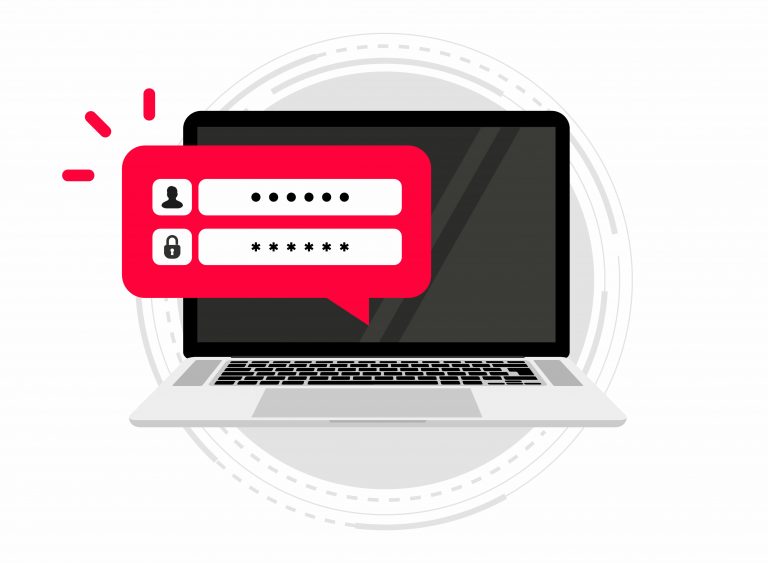Securing Your Health Data: Privacy Measures in Telemedicine
January 25, 2024Telemedicine has become an increasingly popular option for accessing healthcare services, allowing patients to consult with healthcare providers remotely. What…

Personal data, also known as personally identifiable information (PII), is any information that can identify an individual, such as their name, address, date of birth, social security number, or financial details. With the increasing use of cloud services for storing and sharing data, customers must understand the risks associated with leaving personal data on these platforms and how to remove it effectively.
Personal data is any information that pertains to an identified or identifiable individual. This can encompass a variety of details, such as names, addresses, phone numbers, email addresses, social media profiles, financial information, and more. It is crucial to safeguard personal data to prevent unauthorized access or misuse of customer data. Understanding what constitutes personal data is essential to handling and deleting it from cloud services effectively.
Removing personal data from cloud services to safeguard your privacy and prevent unauthorized access to sensitive information is crucial. When personal data is stored in the cloud, it becomes vulnerable to security breaches, hacking, and data leaks.
By removing personal data from cloud services, you can minimize the risk of identity theft, fraud, and other cybercrimes. Moreover, with the increasing number of data privacy regulations, such as the GDPR, it is essential to comply with these regulations and ensure the proper handling and deletion of personal data.
Failing to remove personal data from cloud services can have significant risks, including privacy breaches, data security threats, and legal compliance issues.
To mitigate these risks, it is crucial to review and delete personal data from cloud services regularly, utilize strong encryption methods, and implement full backup systems with strict access controls.
In today’s digital age, it is important to be mindful of the personal data we store on cloud services. Knowing how to remove personal data from cloud services is valuable, whether for security reasons or simply to declutter our online presence.
Deleting your account from a cloud service is important in protecting your personal data. To do this effectively, navigate to the cloud service’s account settings or preferences section. Here, you should look for options to delete or deactivate your account. These options are usually found in the account management or security settings.
Once you locate the option to delete your account, follow the instructions provided by the cloud service. These instructions typically guide you through several steps to confirm the deletion process. It’s important to read and understand these steps carefully to ensure that your account and all associated data are completely removed.
After completing the process, verify that your account has been successfully deleted. You can do this by checking for a confirmation email from the cloud service, which usually acknowledges that your account has been deleted. If you don’t receive such a confirmation or are unsure whether the account has been fully removed, contact the cloud service’s customer support for assistance.
A data removal service can effectively ensure your data is securely erased from cloud services. To do this, select a reputable service provider specializing in data removal from cloud platforms, ensuring they comply with data privacy regulations. Review and choose a service that suits your needs. Then, follow the provider’s instructions to initiate the data removal process, providing any necessary information and access credentials. Monitor the process to confirm that all your data has been successfully deleted. Choosing a provider with a proven track record and positive reviews is important to ensure the secure and thorough removal of your personal data from the cloud.
Manually deleting data from cloud services requires careful steps to ensure that your personal information is completely removed. Start by identifying all the data you wish to delete, including files, documents, or folders that contain personal information. Before proceeding with deletion, review this data to decide what needs to be removed and consider creating backups of each folder with any important information.
Once you’ve determined which files or folders must be deleted, permanently delete them from the cloud service. This step involves more than moving items to a trash or recycle bin; ensure that you follow the service’s process for permanent file deletion.
After deleting the files, it’s crucial to empty the trash or recycle bin of the cloud backup service. This step is often overlooked, but it’s necessary to ensure that the data is completely removed and not just hidden.
Additionally, check for any additional copies of the deleted data that might exist in other areas. This could include shared folders, linked accounts, or any other locations where your data might be duplicated. Make sure to delete these copies as well.
By meticulously following these steps, you can manually and effectively delete your data from cloud services without deleting files, thus minimizing the risk of unauthorized access or data breaches. Using encryption for your data can also provide an additional layer of security against potential cloud vulnerabilities.
To protect personal data in the cloud, implementing encryption is crucial. Choose a strong encryption algorithm, like AES (Advanced Encryption Standard), and select a secure, sufficiently long encryption key. Encrypt data before uploading it to the cloud using appropriate software or tools. It’s important to store encryption keys securely and separately from the encrypted data. Regularly update and strengthen your encryption protocols to keep up with emerging threats. Additionally, regularly review and update encryption practices, train employees on encryption techniques and best practices, and use multi-factor authentication for added security. Stay informed about encryption-related regulations and compliance standards to ensure your practices are secure and legally compliant. These measures significantly enhance the protection of personal data in the cloud.
In today’s digital age, we rely heavily on cloud services for storing and accessing our data. However, with the rise of data breaches and privacy concerns, it’s important to consider the security of our personal information.
When utilizing social media platforms, it is crucial to safeguard your data. Here are some steps you can take to protect your information:
To enhance privacy and security with email providers, using a strong, unique password for each email account is important to prevent unauthorized access. Enabling two-factor authentication adds a layer of security by requiring a second verification step. Regularly updating and reviewing privacy settings ensures that only trusted individuals can access your email data. Being cautious about sharing personal information online, especially through email, and avoiding clicking on suspicious links or downloading attachments from unknown sources are also key measures. These steps help minimize the risk of compromised personal data through email providers.
Cloud storage services are widely used for storing personal data, making it crucial to understand how to protect and remove this data when necessary. Here are steps to remove personal data from cloud and storage systems and services:
When it comes to online shopping websites, it is crucial to be mindful of the personal data you share and take steps to protect it. To safeguard your information:
By following these tips, you can minimize the risk of your data being compromised while enjoying the convenience of online shopping.
Our personal data is increasingly vulnerable to cyber attacks and breaches in today’s digital age. This is especially true when storing our data on cloud services. So, how can we protect our personal information in the cloud?
Creating strong passwords is essential for protecting your personal data in the cloud. To do this, use a combination of uppercase and lowercase letters, numbers, and special characters, and ensure that your passwords are at least 8 characters long. Avoid common words or personal information in your passwords. It’s also important to have a unique password for each online account. Using a password manager can help securely store and manage these passwords. Besides strong passwords, regularly updating them and enabling two-factor authentication are recommended practices for enhancing online security and safeguarding personal information.
Enabling two-factor authentication (2FA) adds an important layer of security to protect your personal data stored in the cloud. To enable 2FA, log into your account and navigate the security settings. There, select the option to enable two-factor authentication and choose a preferred authentication method, such as a text message with a verification code or an authentication app. Follow the prompts to set up this method. Once 2FA is enabled, you must provide your password and the additional verification code each time you log in. This process makes it more difficult for unauthorized individuals to access your account. Regularly updating and checking your privacy settings is also advised to maintain ongoing security.
Regularly checking and updating privacy settings is crucial for safeguarding personal data in the cloud. Follow these steps to ensure your privacy is protected:
When sharing personal information online, it is important to exercise caution to protect your privacy and security. Here are some steps to follow:
When deleting personal data from cloud services, the statement on deletion and retention is paramount. Service providers must clearly outline their policies on how long they retain user data and how they ensure its complete deletion. This statement should include data encryption, secure deletion request protocols, and regular audits to ensure compliance.
Ensuring removing personal data from cloud services is a crucial responsibility for CIOs. They must guarantee the complete deletion of sensitive information to prevent privacy breaches. To achieve this, some techniques include:
CIOs should also prioritize implementing strong access controls and regularly reviewing the security practices of their cloud service providers. Educating employees on data privacy and implementing robust authentication measures can also enhance personal data protection. By following these strategies, enterprise CIOs can effectively mitigate the risk of data exposure and maintain compliance with privacy regulations.
In summary, properly removing personal data from cloud services requires careful consideration of the specific platform’s data storage space deletion policies and procedures. It is crucial to follow the recommended steps provided by the service provider to ensure complete removal. Additionally, regularly reviewing and updating privacy settings can help limit the amount of personal information stored in the cloud. Failure to adequately remove personal data may result in privacy breaches and potential misuse of sensitive information.

Telemedicine has become an increasingly popular option for accessing healthcare services, allowing patients to consult with healthcare providers remotely. What…

In a world where cyber threats are becoming increasingly sophisticated, the importance of having strong passwords cannot be overstated. But…

Are you looking for a new job while still employed? Discreet job searching online is the key to keeping your…